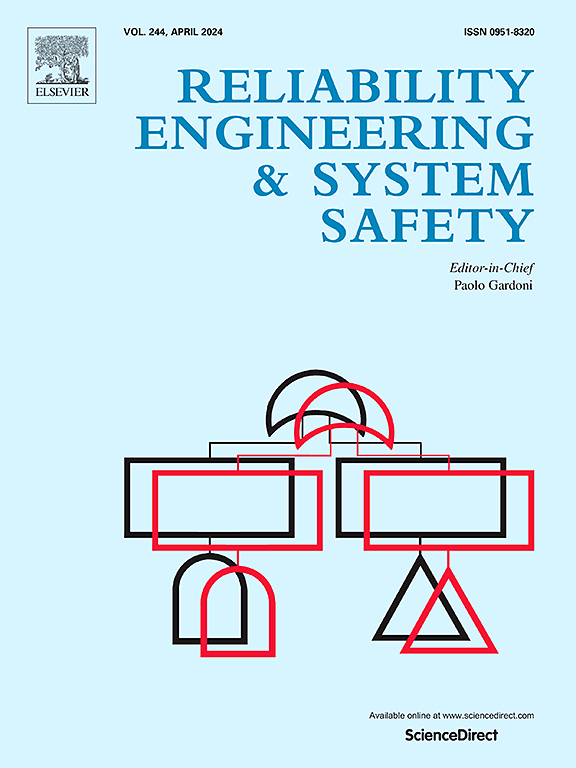基于自关注机制改进的双Kullback-Leibler散度KLDattW的早期故障检测
IF 11
1区 工程技术
Q1 ENGINEERING, INDUSTRIAL
引用次数: 0
摘要
由于基于主成分分析(PCA)的传统方法的检出率不理想,工业过程中早期故障的精确识别面临着重大挑战。Kullback-Leibler散度(KLD)检测在一定程度上提高了故障检测能力,但它以相同的方式处理所有统计成分:减少或模糊与故障相关的基本数据。本文提出了一种基于自关注的双KLD检测技术,该技术将KLD的第一阶段与局部离群因子(LOF)相结合来量化故障的严重程度。第二个KLD阶段根据从自注意机制获得的错误加权分数计算一个新的统计数据KLDattW。此外,通过核密度估计(KDE)方法确定控制极限。KLDattW通过将该方法应用于连续搅拌槽加热器(CSTH)过程中引起的三种传感器早期故障和田纳西伊斯特曼(TE)过程中引起的两种传感器早期故障,验证了该方法的有效性,在所有评估案例中,与现有方法相比,该方法的故障检出率(FDRs)和有效性更高。本文章由计算机程序翻译,如有差异,请以英文原文为准。
Incipient fault detection based on double Kullback–Leibler divergence KLDattW improved by a self-attention mechanism
The precise identification of incipient faults in industrial processes presented a significant challenge, as traditional methods based on principal component analysis (PCA) exhibit unsatisfactory detection rates. Kullback–Leibler divergence (KLD) detection improves fault detection capabilities to a certain extent, but it processes all the statistical components in the same way: diminishing or obscuring essential data that are pertinent to faults. This paper presents a self-attention-based double KLD detection technique in which the first stage of KLD is combined with the local outlier factor (LOF) to quantify the severity of faults. The second KLD stage calculates a new statistic, , on the basis of the fault-weighted scores obtained from the self-attention mechanism. Additionally, control limits are determined via the kernel density estimation (KDE) method. validated this method by applying it to three types of incipient sensor faults induced during the continuous stirred tank heater (CSTH) process and two incipient faults induced during the Tennessee Eastman (TE) process, demonstrating its superior fault detection rates (FDRs) and efficacy compared to the existing methods in all evaluated cases.
求助全文
通过发布文献求助,成功后即可免费获取论文全文。
去求助
来源期刊

Reliability Engineering & System Safety
管理科学-工程:工业
CiteScore
15.20
自引率
39.50%
发文量
621
审稿时长
67 days
期刊介绍:
Elsevier publishes Reliability Engineering & System Safety in association with the European Safety and Reliability Association and the Safety Engineering and Risk Analysis Division. The international journal is devoted to developing and applying methods to enhance the safety and reliability of complex technological systems, like nuclear power plants, chemical plants, hazardous waste facilities, space systems, offshore and maritime systems, transportation systems, constructed infrastructure, and manufacturing plants. The journal normally publishes only articles that involve the analysis of substantive problems related to the reliability of complex systems or present techniques and/or theoretical results that have a discernable relationship to the solution of such problems. An important aim is to balance academic material and practical applications.
 求助内容:
求助内容: 应助结果提醒方式:
应助结果提醒方式:


